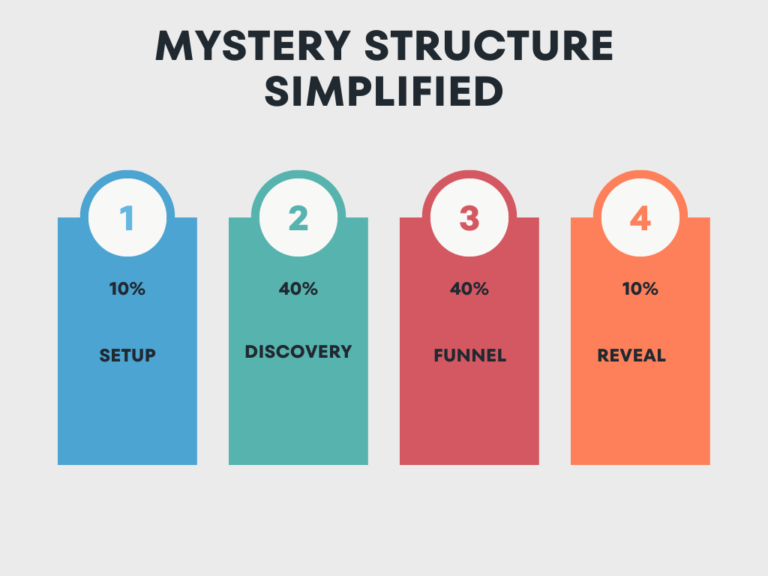How to Build Story in the Middle – Part 1

The Middle is Where Story Happens
A good beginning sets up expectations and a solid ending resolves the story. In the beginning, your reader enters the story world, meets the protagonist, and encounters a trigger that sets up the story. In the end, your protagonist challenges the villain and resolves the story question, leaving your reader with a sense of satisfaction. Between those two story points lies the great, vast middle.
That vast middle is where your story happens. You deepen the story enlarging on the promise at the beginning. The middle expands your story. You delve into the theme, create subplots that echo and support the main storyline, and enrich the understanding of your protagonist. You do this by creating a line of conflicts that put more at stake as the story unfolds.
The middle is where you deliver on the story promise you made in the beginning.
For the sake of clarity, I’ll use the four-act structure: beginning, before the midpoint, after the midpoint, and climax/resolution, so we all understand where we are in the story’s progress.
Make it Real
Once you set the story in motion, it’s time to expand. In Act 2, your protagonist, and your reader, enter a discovery phase. Now’s the time to keep your reader interested in your story. You have the entire rest of the novel to build your story to a climax and resolution. Give your reader more of your story.
In your mystery, your detective explores the victim’s world. She attempts to make connections between the victim and surviving suspects.
The Problem
Explore what started your protagonist on the story journey.
For mystery writers, your detective now investigates the murder. They may go to the murder scene to discover clues. They discover the murder victim’s connections to other people, identify possible suspects, and interview those suspects. They examine evidence to determine what can lead them toward discovering the killer.
By providing details related to the problem, you emphasize its importance. The reader feels the dilemmas the problem presents are important to the protagonist and the story.
The Protagonist
Expand your reader’s knowledge of your protagonist. They saw them in their everyday world, now show how they think, what actions they take to address the problem. How they respond to challenges or opponents who try to lead them away from their goal.
How does your sleuth go about discovering evidence? Do they think rationally, act first and think later? You’re expanding your reader’s understanding of how your detective works. What does she notice? What is their interview style when they meet suspects?
Who else is in your sleuth’s world? Sidekick, friend, mentor, opposition, love interest.
Your reader learns your protagonist is human, a three-dimensional character. As you introduce small conflicts, your reader learns how the protagonist deals with obstruction. This works as a setup for how the protagonist responds to bigger obstacles and conflict later in the story.
As you expand your reader’s vision and understanding of the protagonist, you are reassuring the reader that you are delivering what you promised in the book blurb and in the beginning. Yes, they are reading the right genre. Yes, your protagonist embodies the perfect hero for the story. And your reader cares.
Supporting Characters
Bring on the cast. In Act 2 (Four-Act Structure) you’re expanding the story to bring your reader into all the facets. Supporting characters mirror different aspects of the theme and your protagonist. They enliven the story world with their personalities, showing different aspects of the protagonist’s strengths and weaknesses.
Introduce your supporting characters. Who lives in the story’s world? How do they relate to the protagonist? How do they relate to each other?
Mystery writers introduce your suspects, including the villain. Your reader won’t know they are the villain until much, much later, but introduce them now if you haven’t already at the beginning.
Complicate your hero’s life. Is there a colleague determined to undermine your hero’s goal? Is there a love interest? Are they hesitant, on board, ready to ditch the relationship?
Supporting characters help the reader get invested with the story. As your hero interacts with characters, you give your reader opportunities to empathize and engage with your hero and the story.
Subplots
Act 2 (Four-Act Structure) is the place to begin subplots. Add dimension to your story with subplots that create mini-stories within your mystery. Without the added breadth, your story can feel flat. Or it may seem bloated because you spend too much time adding to the elements of your main storyline.
Subplots humanize your story. In the real world, we don’t have just one problem to solve. They add dimension to your protagonist and open up opportunities for your reader to empathize.
Internal demons, love interest and opponents are common mystery subplots adding character depth to your sleuth who is always on the trail of solving the mystery puzzle.
The Choice
The protagonist makes a difficult but necessary choice. He means well, but and it seems like the best course of action, but the consequences set him on a wrong path. This choice is often called the first pinch point. It happens somewhere near the middle of Act 2 (Four-Act Structure). This choice pushes the protagonist toward the midpoint.
The First Part of the Middle Expands Your Story
In the beginning, you promised your reader a good story. The first part of the middle enlarges the story world. You add dimension to your main character as they interact with other characters, confront obstacles and respond, exposing their character traits. Your reader gets to know the character and root for them because in the second part of the middle you’ll disrupt those expectations as everything reverses.
Here you lay groundwork for the reversals, major conflicts, and surprises that escalate in the second half of the middle.
Next week I’ll talk about that second half and how to escalate tension as you work toward the climax.
Photo by Andrew Draper on Unsplash





